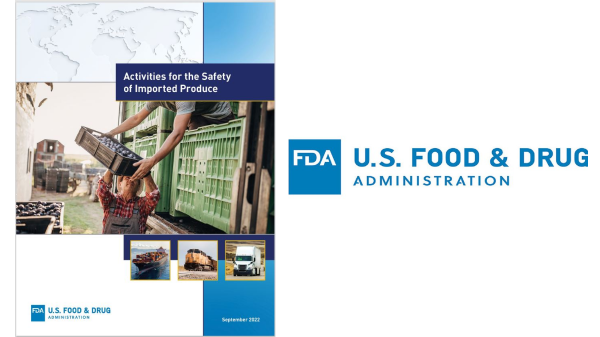In February 2019, the U.S. Food and Drug Administration released the Strategy for the Safety of Imported Food (Import Strategy) outlining the agency’s comprehensive approach to ensuring the safety of food imported into the United States.
This strategy aims to address the complex challenges that arise to ensure food safety amid the complexity of global supply chains, varying food safety systems, and differing levels of regulatory oversight among the more than 200 countries and territories from which the U.S. imports food.
Now the agency is detailing how the 2019 strategy for safeguarding imported food applies specifically to imported produce in the Activities for the Safety of Imported Produce.
The success of FDA’s imported food safety efforts relies in large part on the safety of produce, since fresh fruit and vegetables represent a significant volume of imported food.
Today, the U.S. imports roughly 32% of its fresh vegetables and 55% of its fresh fruit.
The Activities for the Safety of Imported Produce describes how the work to help ensure the safety of these commodities is a critical component of the New Era of Smarter Food Safety in building on the preventive standards established by the FDA Food Safety Modernization Act (FSMA).
The activities document outlines how the agency is working to enhance the safety of fresh fruits and vegetables through the four goals established in the 2019 import strategy document, including:
Goal 1: Food Offered for Import Meets U.S. Food Safety Requirements
One of the most effective ways to keep imported produce safe is for industry to comply with applicable U.S. food safety requirements. This section explores how the FDA engages in compliance verification activities through inspections and testing; information sharing with foreign regulatory partners; and education and outreach activities to raise awareness and understanding of food safety requirements.
Goal 2: FDA Border Surveillance Prevents Entry of Unsafe Foods
The FDA conducts border surveillance activities at more than 300 active U.S. ports of entry. This section explores how the FDA uses information such as an importer’s compliance history and risks associated with the commodity to inform actions such as import entry screening, examination, sampling, and testing that can help us to prevent unsafe produce from entering the country.
Goal 3: Rapid and Effective Responses to Unsafe Imported Food
This section explores the FDA’s process for quickly responding to outbreaks and other contamination events, including efforts to remove unsafe produce from the marketplace if it has entered the country. This section also explores some steps the FDA takes beyond outbreaks to reduce the likelihood of another outbreak event.
Goal 4: Effective and Efficient Food Import Program
Advancing the FDA’s public health mission as it pertains to imported food includes enabling smarter food safety, a world-class workforce, integrated and agile management systems, and meaningful engagement with stakeholders. It also requires responsible stewardship of resources, including taxpayer dollars. This section explores how the FDA is implementing an adaptive, risk-informed, and cost-effective management system and infrastructure to support organizational excellence, performance, and accountability.



